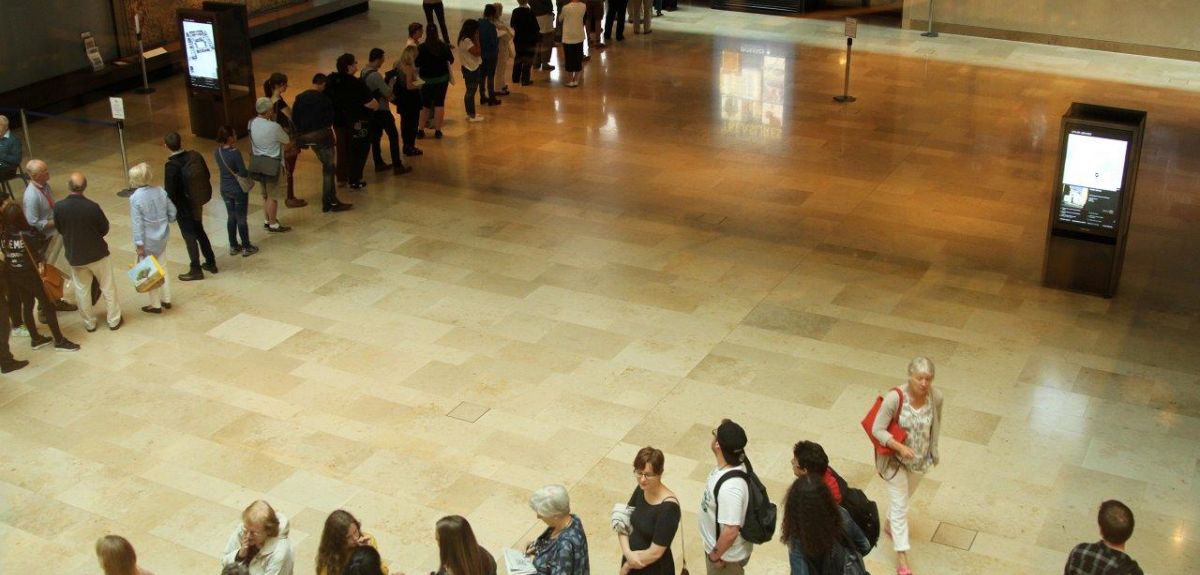
Photograph by Rosie Burke
Lord of the Rings: the return of the Tolkien map
Hundreds of Tolkien fans, scholars and members of the public flocked to the Weston Library today (23 June) to see a recently-discovered map of Middle-earth.
The exhibition was supposed to be for one day only - but due to popular demand it has now been extended for another day, from 9am-5pm tomorrow (24 June).
As a queue snaked around the Blackwell Hall in the Weston Library and Bodleian staff, the members of staff behind the cafe called it "the biggest queue we have ever seen here".
The map, which is annotated by JRR Tolkien, was acquired by the Libraries earlier this year. Visitors can see Tolkien’s copious notes and markings on the map, which reveal his vision of the creatures, topography and heraldry of his fantasy world where The Hobbit and The Lord of the Rings take place.
The map went unseen for decades until October 2015 when Blackwell’s Rare Books in Oxford offered it for sale. It had previously belonged to Pauline Baynes (1922 – 2008), the acclaimed illustrator who was the only artist approved by Tolkien to illustrate his works during his lifetime. The map was a working document that Tolkien and Baynes both annotated in 1969 when Baynes was commissioned to produce a poster map of Middle-earth.
At the time, The Lord of the Rings had never been illustrated so Tolkien was keen to ensure that Middle-earth was accurately depicted. His copious annotations can be seen in green ink or pencil on the map, most notably his comments equating key places in Middle-earth with real world cities, for example that ‘Hobbiton is assumed to be approx. at [the] latitude of Oxford.’
He also specified the colours of the ships to be painted on the poster map and the designs on their sails as well as notes about where animals should appear, writing ‘Elephants appear in the Great battle outside Minas Tirith.’
The map has joined the Bodleian’s Tolkien archive, the largest collection of original Tolkien manuscripts and drawings in the world. It was purchased with assistance from the Victoria & Albert Purchase Grant Fund and the Friends of the Bodleian, and the display coincides with the Annual General Meeting of the Friends of the Bodleian.